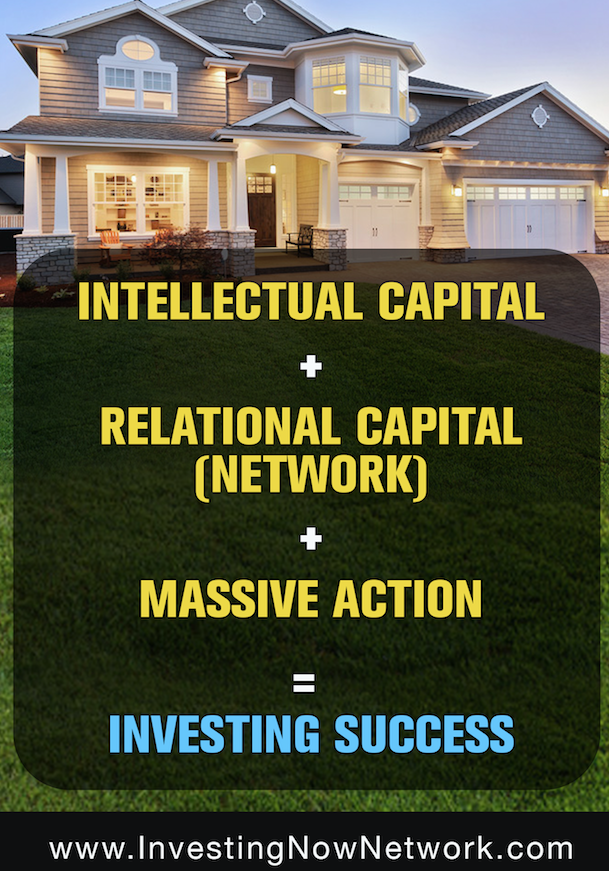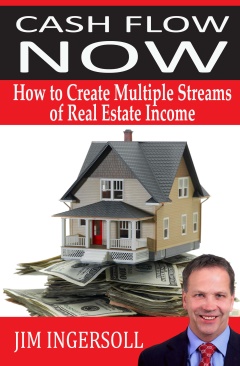Joint ventures can be a great way to build your rental portfolio or participate passively in someone else deal flow. Here is how they work.
The real estate investor is the “catalyst” who does all of the work for the investment including:
- Find the property and negotiate the sale at a great price with equity day one (like buying on-sale at Macys)
- Manages the closing
- Completes the property fix-up to make it “rent ready”
- Manages the property (landlord or works with a property manager)
The financier is completely passive and leverages into the deal as the funding source.
The financier does not have to find the property, deal with contractors, toilets or tenants and that is a great way to participate passively! The financier participates in the deal passively, invests on Main Street vs. Wall Street and is nicely secured in the deal to manage risk.

“When the catalyst works directly with financier,you have a winning combination for cash flow and equity growth using a joint venture.”
Jim Ingersoll
The best part of this joint venture is that both parties are critical to the overall success of the investment.
A Case Study for Cash Flow & Great Returns
The catalyst markets and finds a great deal on a 3 bedroom, 2 bath home at a 20% discount price point (80% loan-to-value ratio). This case study is not a home run deal with a 20% LTV, but reflects a deal that can be easily orchestrated in most markets. What that means is the purchase price and all fix-up costs will not exceed a total of 80% of the after-repair-value of the home.
| Purchase price: | (includes closing costs) $ 75,000 |
| Fix-up costs: | $ 23,000 |
| Total investment required: | $ 100,000 (with closing costs) |
| After repair value: | $ 125,000 |
The total investment required is $100,000 and the after repair value of the property is $125,000, which leaves $25,000 of equity once the fix-up is completed on the property. The catalyst found the deal, negotiated it, and performed the fix-up, while the financier funds the entire transaction expense of $100,000.
In my market here in Richmond, VA, a house like this one will be a typical 3 bedroom, 2 bath house in a working class neighborhood. This house in Richmond will rent for $1,100 per month creating a nice income stream for the joint venture investment.
The primary on-going expenses associated with holding real estate are taxes and insurance. In Richmond, the taxes and insurance combined will be about $150 per month for the house in this example which leaves $950 net rental income (approx $860 if using a property manager) for the on-going monthly income stream for the joint venture.
The $100,000 investment has now been used to pick up $25,000 of gross equity and a $950 monthly income stream. I hope you are wondering how this gets applied back to the members of the joint venture because the answer is… any way that the Financier and Real Estate Catalyst come to terms.
For simplicity sake, let’s assume that the two joint venture members agree to a 50/50 split in this venture.
With a 50/50 split, the $950 monthly income stream is split so that both members receive $475 each month; along with this monthly income stream both members also will share the upside equity at some point in the future.
What Did Each Member In Joint Venture Earn?
Let’s make one last assumption to show how the ultimate return can be easily calculated for both members of this joint venture.
Let’s assume that both members hold onto this investment property for three years and then sell it for $147.012,535, which assumes 5% annual appreciation
| Financier earnings: | |
| $475 per month for 36 months: | $ 17,100 |
| Upside equity split of the total $59,935: | $ 23,506 |
| Total return over the 3 years: | $ 40,606 |
| Total investment made: | $ 100,000 |
| Annualized return for private lender: | 12.0% |
| Real Estate Catalyst (Investor) earnings: | |
| $475 per month for 36 months: | $ 17,100 |
| Upside equity split of the total $40,000: | $ 23,506 |
| Total return over the three years: | $ 40,606 |
Everyone Is Happy
The financier made a very strong return of 12% annually and his (or her) $100,000 investment turned into a $140,606 at the end of the three years.
The real estate investor enjoyed $475 per month in cash flow and an overall return of $40,606 over the three years.
I love placing joint ventures into tax-free accounts using self directed IRA’s. This is equity financing and avoids UBIT in self-directed accounts such as IRAs and health savings accounts.

Knowing how to joint venture is one more tool in your investment tool box and adds to your intellectual capital. Keep learning, keep building your network and you will quickly build a nice rental portfolio for cash flow and long-term growth!
Questions? Leave them in the comments
Thanks for sharing this content!
Jim







This is a great set up for both parties. My question is how do you find people who are willing to be the financier? My assumption is using investor networks local to you and already having your eye on properties that have working numbers. I know relationships are very important.
Thank you so much for the great article, it was fluent and to the point. Cheers.
Thank you!
Jim
Jim isn’t this scenario creating a security from my foggy memory is why I haven’t done it? Forms?
I always recommend consulting an SCC attorney for specific concerns.
Jim